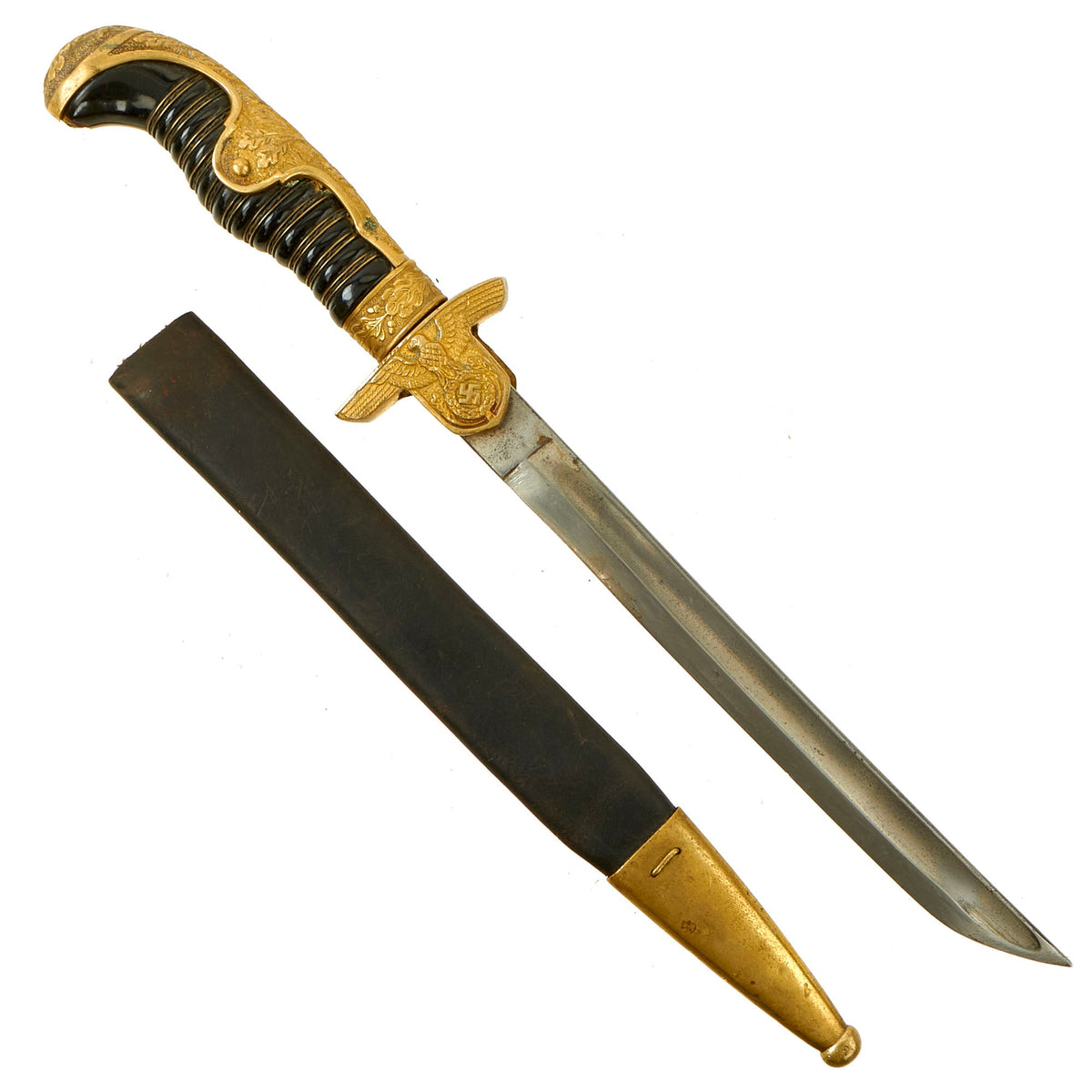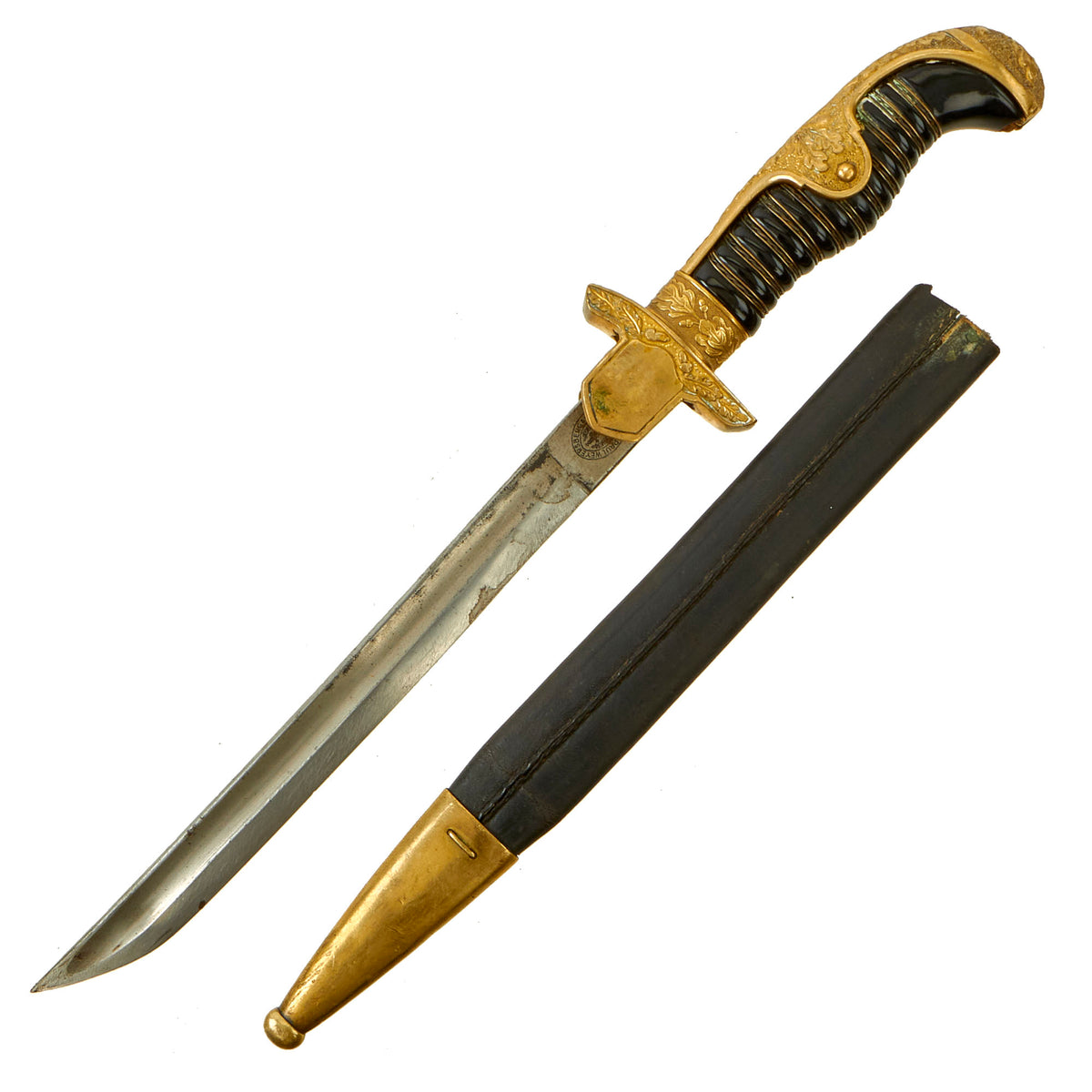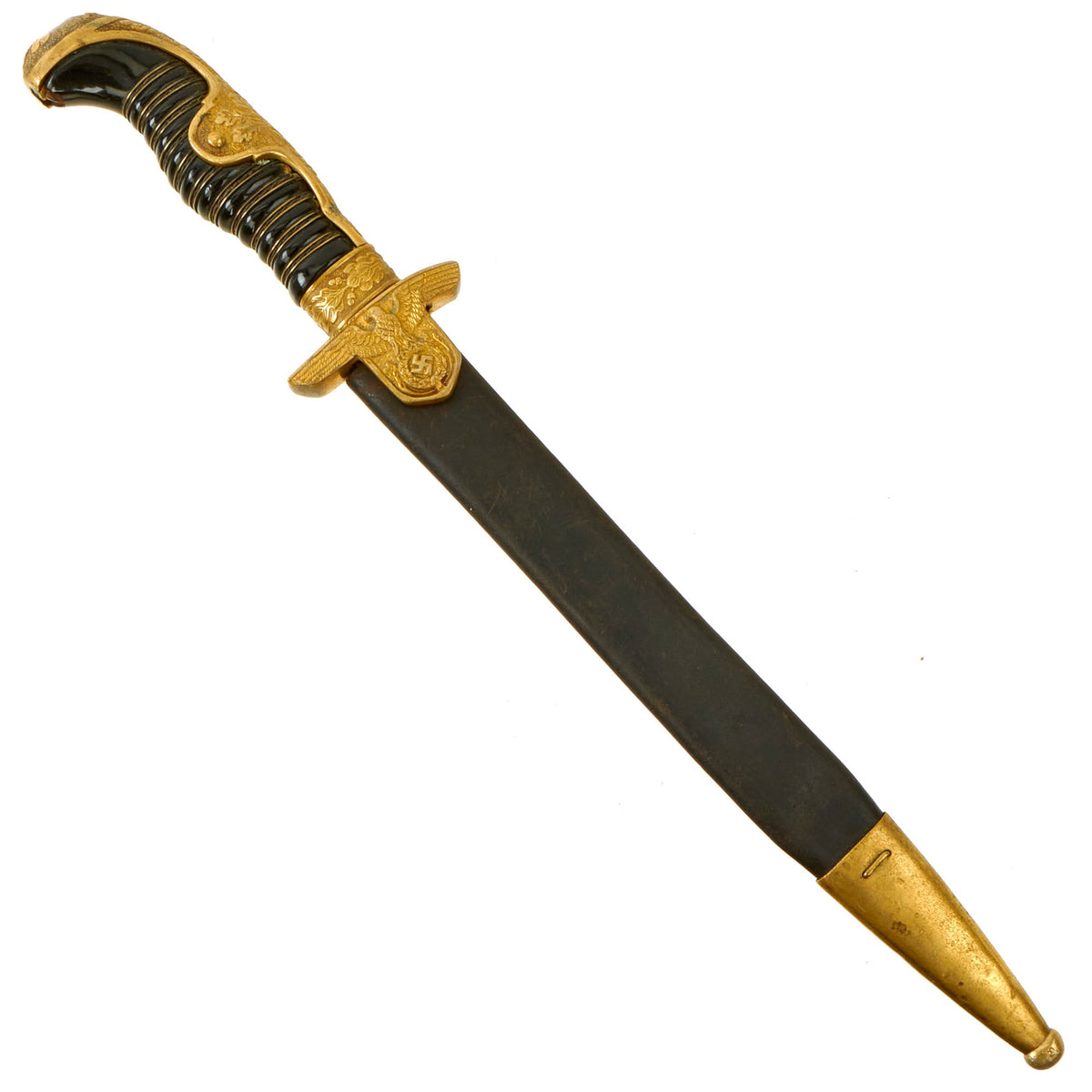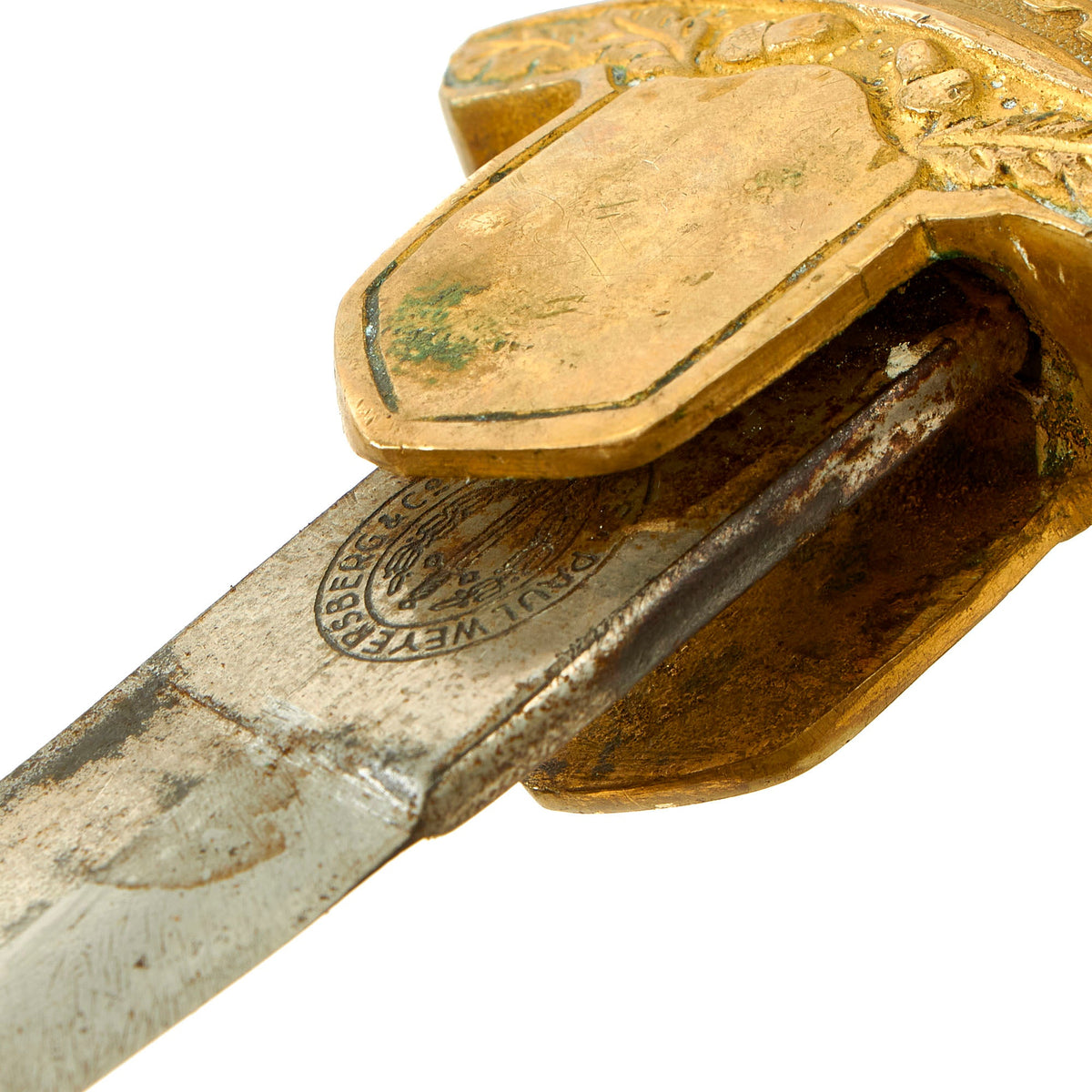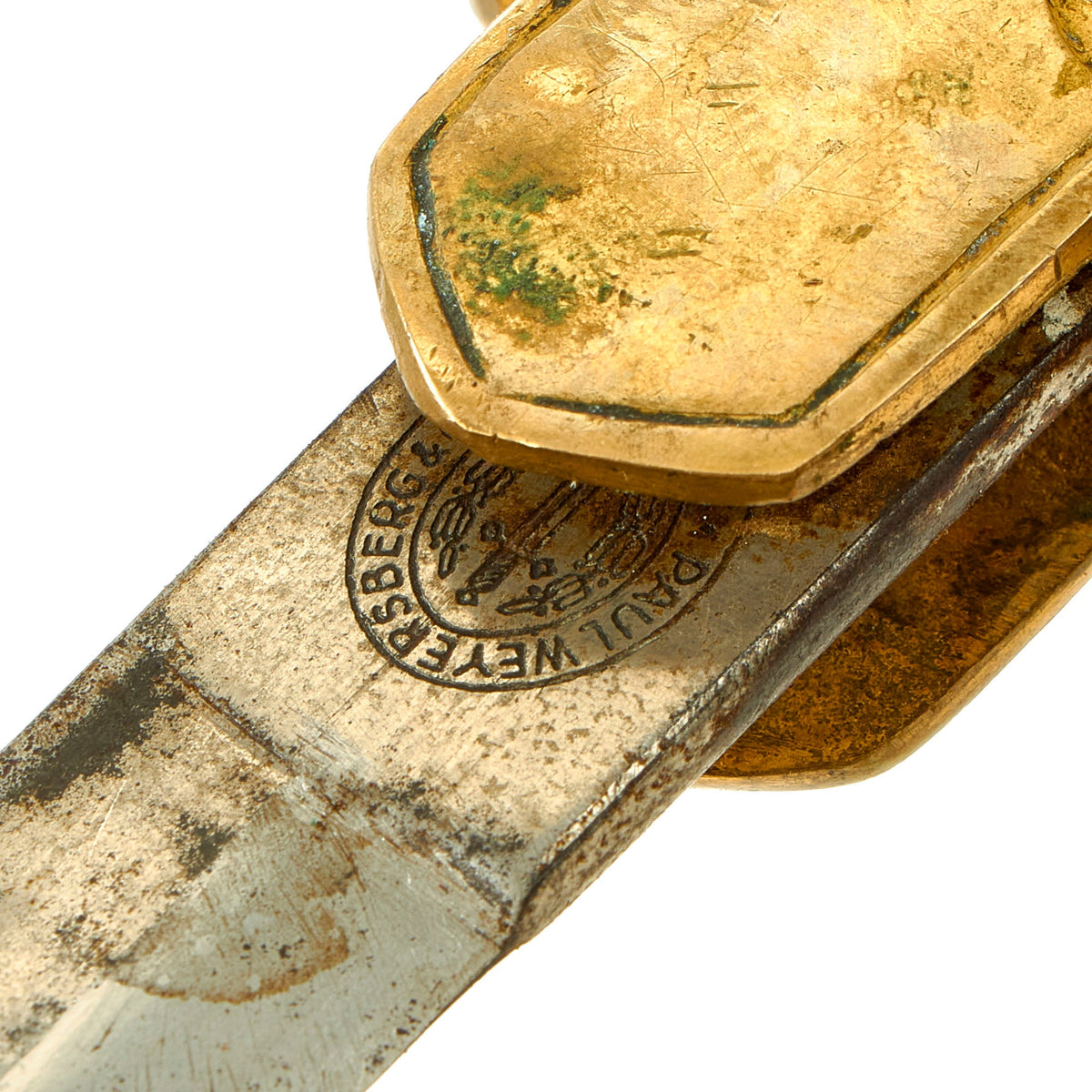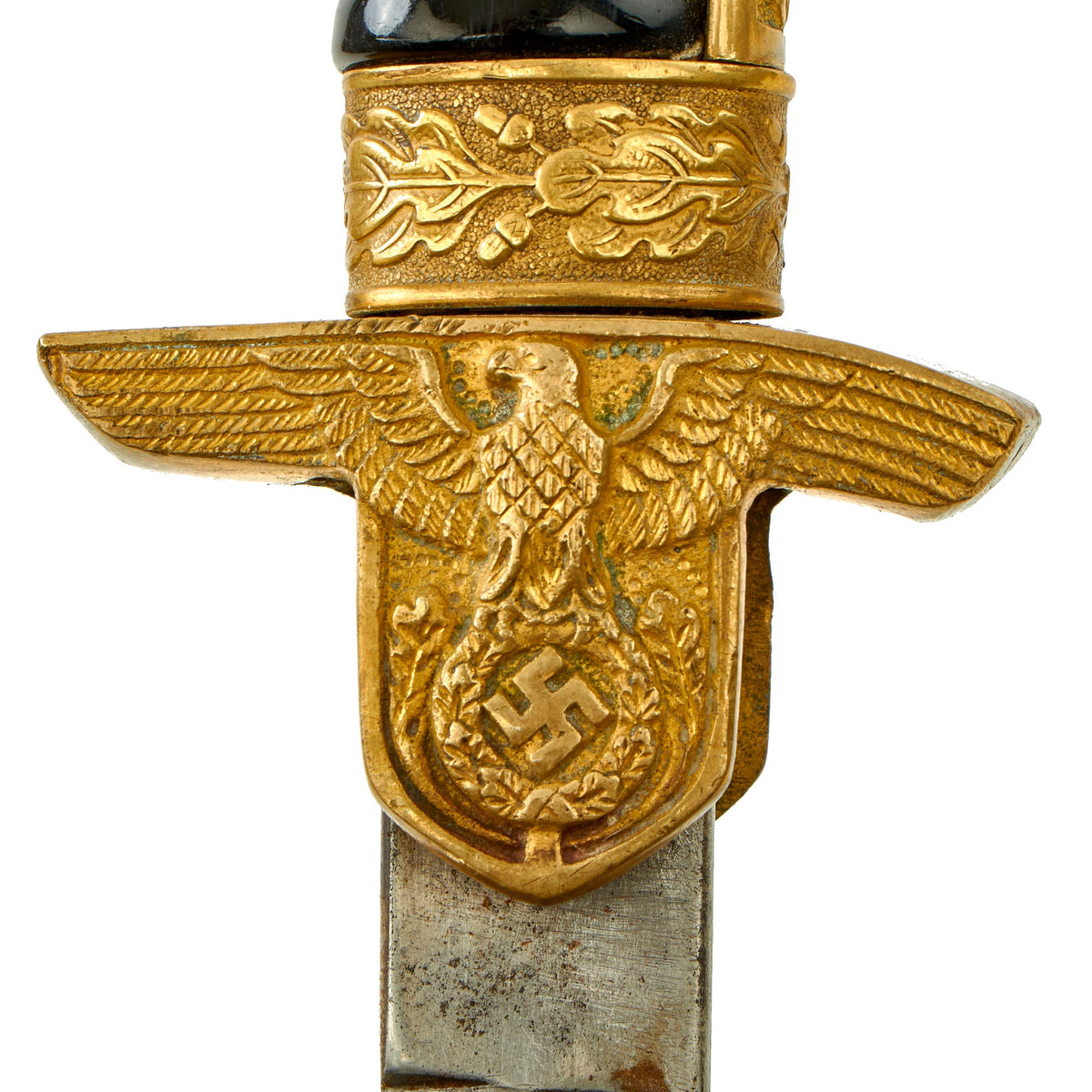Original German WWII Army Officer Dove Head Sword Converted by Paul Weyersberg Converted to Fighting Knife with Scabbard Original Items
$ 395,00 $ 118,50
Original Item: Only One Available. This is a very interesting fighting knife from the WWII Period, which actually began life as a very nice Army Officer Dove Head Sword, made by the firm Paul Weyersberg & Co. of Solingen. At some point after that, the blade was shortened by over 20 inches, and the guard mostly removed to make it into a knife. The nickel plated blade was reshaped and sharpened, and it was fitted with the lower end of a brass fit leather scabbard.
The hilt is made from the classic gilt brass alloy, not the later war plated aluminum. It features many “Oak leaf and acorn” embossed designs, and the crossguard was reduced to just be the size of the spread wing eagle. The grip is black celluloid over wood, and still retains its original wire wrapping. There is some damage to the very bottom of the grip, but otherwise it looks great. The hilt is definitely a bit loose on the blade, which has been cut down to 9 1/4″ and sharpened.
The ricasso of this blade is etched with the trademark logo of Paul Weyersberg & Co., Waffenfabrik (Weapons Factory) of Solingen, the legendary “City of Blades” in western Germany. The reverse ricasso is etched with PAUL WEYERSBERG & Co. / SOLINGEN in double ovals around the firms trademark “Sword-and-Wreath” logo, which was the only marking they used during the Third Reich era. This company was one of many in Solingen owned by members of the Weyersberg family. The company survived the war, but ceased production in 1955. For more information please see GERMAN KNIFE AND SWORD MAKERS by J. Anthony Carter. Unfortunately due to being covered by the rainguard / chappe, this is nearly impossible to photograph well.
A very interesting cut down dove head sword from WWII, possibly used by German forces, or more likely, the U.S. as they captured and repurposed many German Weapons. Ready to research and display!
Specifications:
Blade Length: 9 1/4″
Blade Style: Single Edge w/ Fuller
Overall length: 14 1/4“
Crossguard: 2 1/4”
Scabbard Length: 10 1/4″
The German Army (German: Heer, was the land forces component of the Wehrmacht, the German armed forces, from 1935 to 1945. The Wehrmacht also included the Kriegsmarine (Navy) and the Luftwaffe (Air Force). During World War II, a total of about 15 million soldiers served in the German Army, of whom about seven million became casualties. Separate from the army, the Waffen-SS (Armed SS) was a multi-ethnic and multi-national military force of the Third Reich. Growing from three regiments to over 38 divisions during World War II, it served alongside the army but was never formally part of it.
Only 17 months after AH announced publicly the rearmament program, the Army reached its projected goal of 36 divisions. During the autumn of 1937, two more corps were formed. In 1938, four additional corps were formed with the inclusion of the five divisions of the Austrian Army after the Anschluss in March. During the period of its expansion by Adolf AH, the German Army continued to develop concepts pioneered during World War I, combining ground (Heer) and air (Luftwaffe) assets into combined arms teams. Coupled with operational and tactical methods such as encirclements and the “battle of annihilation”, the German military managed quick victories in the two initial years of World War II, prompting the use of the word Blitzkrieg (literally lightning war, meaning lightning-fast war) for the techniques used.
The German Army entered the war with a majority of its infantry formations relying on the horse for transportation. The infantry remained foot soldiers throughout the war; artillery also remained primarily horse-drawn. The motorized formations received much attention in the world press in the opening years of the war, and were cited as the main reason for the success of the German invasions of Poland (September 1939), Norway and Denmark (April 1940), Belgium, France and Netherlands (May 1940), Yugoslavia (April 1941) and the early campaigns in the Soviet Union (June 1941). However their motorized and tank formations accounted for only 20% of the Heer’s capacity at their peak strength.
Fast Shipping with Professional Packaging
Thanks to our longstanding association with UPS FedEx DHL, and other major international carriers, we are able to provide a range of shipping options. Our warehouse staff is expertly trained and will wrap your products according to our exact and precise specifications. Prior to shipping, your goods will be thoroughly examined and securely secured. We ship to thousands clients each day across multiple countries. This shows how we're dedicated to be the largest retailer on the internet. Warehouses and distribution centres can be located throughout Europe as well as the USA.
Note: Orders with more than one item will be assigned a processing date depending on the item.
Before shipping before shipping, we'll conduct a thorough inspection of the items you have ordered. Today, the majority of orders will be delivered within 48 hours. The delivery time will be between 3-7 days.
Returns
The stock is dynamic and we cannot completely manage it because multiple stakeholders are involved, including our factory and warehouse. So the actual stock may alter at any time. It's possible that you may not receive your order once the order has been made.
Our policy is valid for a period of 30 days. If you don't receive the product within 30 days, we are not able to issue a refund or an exchange.
You can only return an item if it is unused and in the same state as the day you received it. You must have the item in its original packaging.
Related products
Uncategorized
Uncategorized
Uncategorized
Uncategorized
Uncategorized
Uncategorized
Armored Burgonet Helmet & Polearm from Scottish Castle Leith Hall Circa 1700 Original Items
Uncategorized
Uncategorized
Uncategorized
Uncategorized
Armoured Fighting Vehicles of the World: AFVs of World War One (Hardcover Book) New Made Items
Uncategorized
Uncategorized
Uncategorized
Uncategorized
Uncategorized
Uncategorized
Uncategorized
